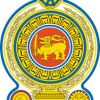ශ්රී ලංකා රබර් පර්යේෂණ ආයතනය
The origin of research on rubber goes back to 1909, when a group of planters in the Kalutara District met and agreed to engage a Chemist to study the coagulation of rubber. This was later expanded to form a Rubber Research Scheme in 1913, with 60% Government funds and the balance came from private subscribers.
The Rubber Research Ordinance was incorporated on the 30th August 1930 and the laboratories of the scheme were moved to its present location at Dartonfield, Agalawatte, in 1936. The Rubber Research Scheme was named the Rubber Research Institute of Ceylon (now Sri Lanka) in 1951, by an amendment of the original Act of Parliament. This shows that the Rubber Research Institute of Sri Lanka (RRISL) is the oldest Research Institute on rubber in the world. It has a proud record of service to the industry by developing technologies in plant breeding, agro-management practices and chemistry of raw rubber.
According to the Rubber Research Ordinance a Rubber Research Board is established for the purpose of furthering and developing the rubber industry. The Board governs the RRISL with the view of managing, conducting, encouraging and promoting scientific research in respect of rubber cultivation, processing, product manufacture and all problems connected with the rubber industry. This Ordinance has been amended from time to time; the most recent introduction has been the “Rubber Research Bill Part II of April 2003 with the amendment No. 28”.
RRISL is the nodal agency in Sri Lanka with the statutory responsibility for research and development on all aspects of rubber cultivation and processing for the benefit of the rubber industry.
The institute specializes in rubber research, both in the biology of the crop and the chemistry of the natural rubber and technology of the product. Further, the institute is committed towards technology transfer activities and training of extension officers and stakeholders. Accordingly, it has six biological research departments: i.e. Plant Science, Genetics & Plant Breeding, Plant Pathology & Microbiology, Soils & Plant Nutrition, Biochemistry & Plant Physiology and Advisory Services and four chemistry departments i.e. Raw Rubber Process Development & Chemical Engineering, Raw Rubber & Chemical Analysis, Polymer Chemistry and Raw Rubber Technology & Development together with units for Adaptive Research, Biometry, Agricultural Economics and Audio Visual Production.
The anagement and staff of all estates and smallholders are important clients of the institute. Close links have always been maintained between all these groups, by constant interaction. The raw rubber and rubber goods manufacturers, the consumers of raw rubber and raw rubber latex exporters are the other group of institute’s clients.
Advisory Services Department of the RRISL caters to the needs of the smallholders and assists the smallholders to sell their latex or to produce quality smoked sheets. Advisory wing of the RRISL al
Listing Details
Address
Agalawatta,
Telephone
+94 34 2247426 , +94 34 2247383
Fax
+94 34 2247427



